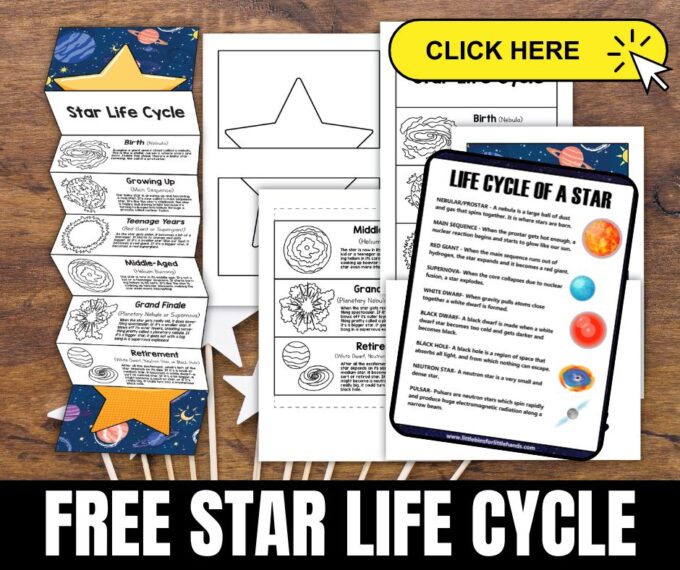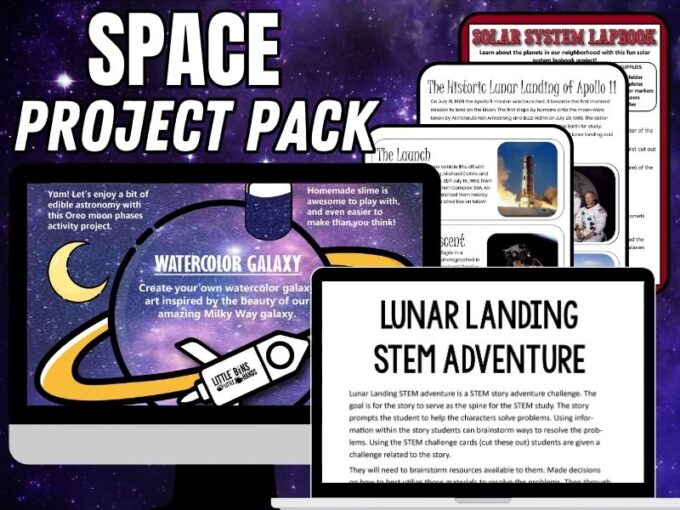Ever wondered where stars come from? Learn about the stages of a star and how it forms, grows, and dies with this fun printable star life cycle project. Perfect for a space theme unit, whether at home or in the classroom. Here is a simple way to explain the life cycle of stars to kids. Our printable space activities make learning easy!
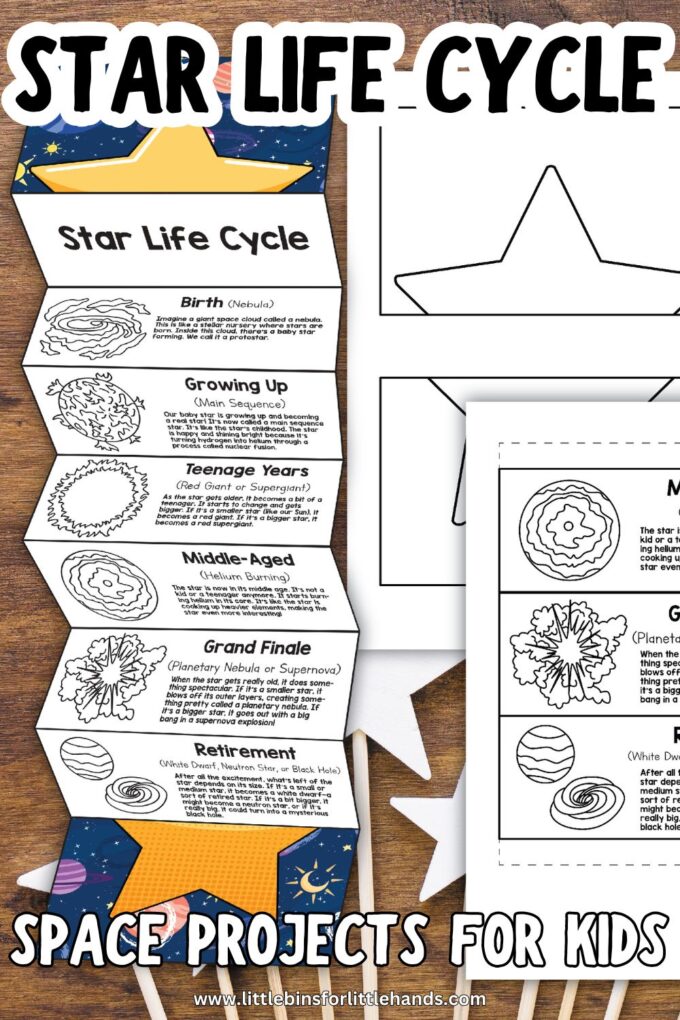
Space Science
Understanding the life cycle of stars is fundamental to space science because stars are the building blocks of galaxies, and their life cycles profoundly impact the universe’s structure and evolution. Studying how stars form, evolve, and die helps scientists comprehend various phenomena observed in space, such as supernovae, black holes, and the creation of heavy elements.
Read More: Find all of our favorite space activities here.
Life Cycle of a Star Project
Supplies:
- Printable star life cycle template (see below)
- Crayons, markers, or colored pencils,
- Scissors
- Tape or glue stick
Instruction:
STEP 1: Print out the template
STEP 2: Color as desired
STEP 3: Cut out both the star sheets and the information sheet along the lines indicated. Make sure to leave both the dotted line sections on the information sheet to attach the star at the top and the bottom!
STEP 4: Fold the information sheet as shown.
STEP 5: Attach the star portion at the top and the bottom where indicated by the dotted line section using glue or tape.
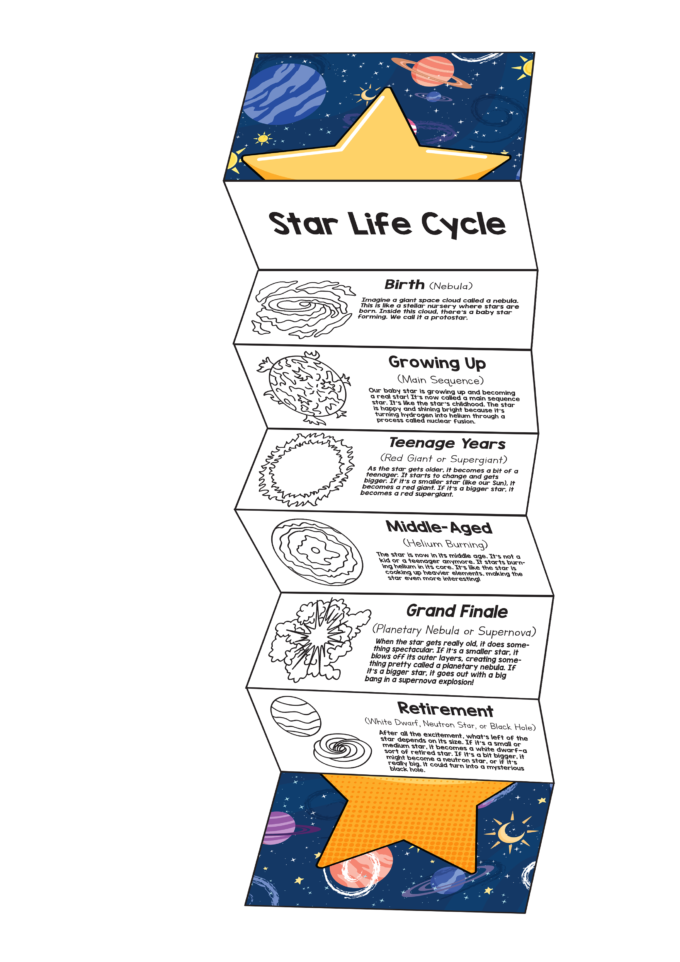
The Life Cycle of a Star For Kids
Follow a star through the stages of its life cycle:
Birth (Protostar)
Imagine a giant space cloud called a nebula. This is like a stellar nursery where stars are born. When a part of a nebula gets squeezed by gravity, it becomes a baby star, or a protostar.
Growing Up (Main Sequence Star)
Our baby star is growing up and becoming a real star! It’s now called a main sequence star. It’s like the star’s childhood. The star
is happy and shining bright because it’s turning hydrogen into helium in its core through a process called nuclear fusion.
Teenage Years (Red Giant or Supergiant)
As the star gets older, it becomes a bit of a teenager. It starts to change and gets bigger. When a star uses up its hydrogen fuel, it expands and becomes a red giant or supergiant. The outer layers puff up and the star gets bigger. If it’s a smaller star (like our Sun), it becomes a red giant. If it’s a bigger star, it becomes a red supergiant.
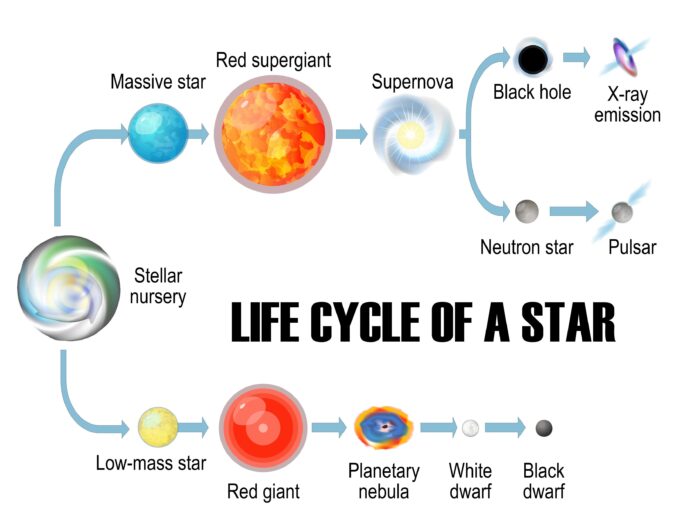
Middle-Aged (Burning Helium)
The star is now in its middle age. It’s not a kid or a teenager anymore. It starts burning helium in its core. It’s like the star is
cooking up heavier elements, making the star even more interesting!
Grand Finale (Planetary Nebula or Supernova)
When the star gets really old, it does something spectacular. If it’s a smaller star, it blows off its outer layers, creating something pretty called a planetary nebula. If it’s a bigger star, it goes out with a big bang in a supernova explosion!
Retirement (White Dwarf, Neutron Star, or Black Hole)
After all the excitement, what’s left of the star depends on its size. If it’s a small or medium star, it becomes a white dwarf—a
sort of retired star. If it’s a bit bigger, it might become a neutron star, or if it’s really big, it could turn into a mysterious black hole.
A star’s life cycle depends on how big it is. Small stars like our Sun have long, quiet lives, while big stars burn brightly and end dramatically.
Free Printable Life Cycle Of A Star Facts & Diagrams
Types of Stars
Main Sequence Stars
These are the most common type of stars, including our Sun. They spend most of their lives steadily burning hydrogen into helium in their cores. Main sequence stars come in different sizes and colors, from small, dim stars to big, bright ones.
Red Giants
When a small or medium-sized star like our Sun runs out of hydrogen fuel, it expands and becomes a red giant. Red giants are much bigger and brighter than main sequence stars, and they shine red instead of yellow.
Super Giants
Some really big stars, much larger than our Sun, become super giants when they run out of fuel. These stars are incredibly bright and can be hundreds or even thousands of times bigger than our Sun.
White Dwarfs
After a small or medium-sized star like our Sun becomes a red giant and puffs away its outer layers, it shrinks down to a small, hot, dense star called a white dwarf. White dwarfs are about the size of Earth but have a lot of mass packed into a tiny space.
Neutron Stars
When a massive star explodes in a supernova, the core may collapse into a super dense object called a neutron star. Neutron stars are incredibly small and dense, with the mass of a whole star squeezed into a space the size of a city.
Black Holes
The most massive stars become black holes when they explode in a supernova. Black holes are so dense that nothing, not even light, can escape their gravity. They are like cosmic vacuum cleaners that suck in everything nearby.

Extend the Learning
- Enjoy edible astronomy with these Oreo moon phases.
- Learn about the moon phases with this simple moon craft activity.
- Build your own satellite.
- Explore the constellations with these constellation activities.
- Create your own DIY planetarium.
- Build an Aquarius Reef Base model.
- Set up this Solar System Model
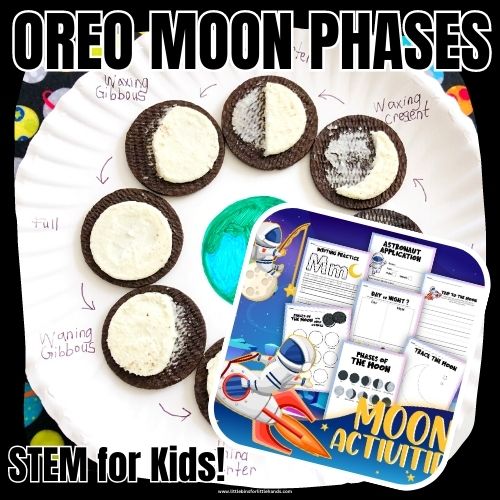

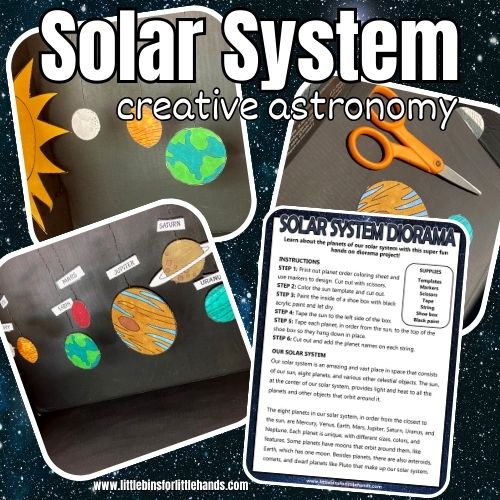
Printable Space Projects Pack
With 250+ pages of hands-on fun space themed fun, you can easily explore classic space themes with your kiddos including moon phases, constellations, the solar system, and of course the 1969 Apollo 11 lunar landing with Neil Armstrong.
⭐️ Activities include supply lists, instructions, and step-by-step pictures. Also Includes FULL Space Camp Week. ⭐️
Celebrate the 1969 lunar landing with easy-to-do activities at home, with groups, at camp, or in the classroom. Read up on this famous event and learn more about Neil Armstrong as well.
- Moon STEAM activities combine science, technology, engineering, art, and math with supply lists, set up and process photos, and science information. Craters, fizzy moon rocks, edible moon phases, watercolor galaxies, a DIY planetarium, bottle rocket, and so MUCH MORE!
- Printable Moon STEM challenges that are simple but engaging for home or classroom. Also included, is a Moon theme STEM Story with challenges perfect for going on a STEM adventure inside or outside!
- Moon phases & Constellation activities include charting moon phases, oreo moon phases, moon phases mini book, and more!
- Solar System activities include a solar system lapbook template and plenty of information to learn about the solar system and beyond!
- Moon extras include I-Spy, algorithm game, binary code project, 3D rocket building, thaumatropes, and MORE!


